


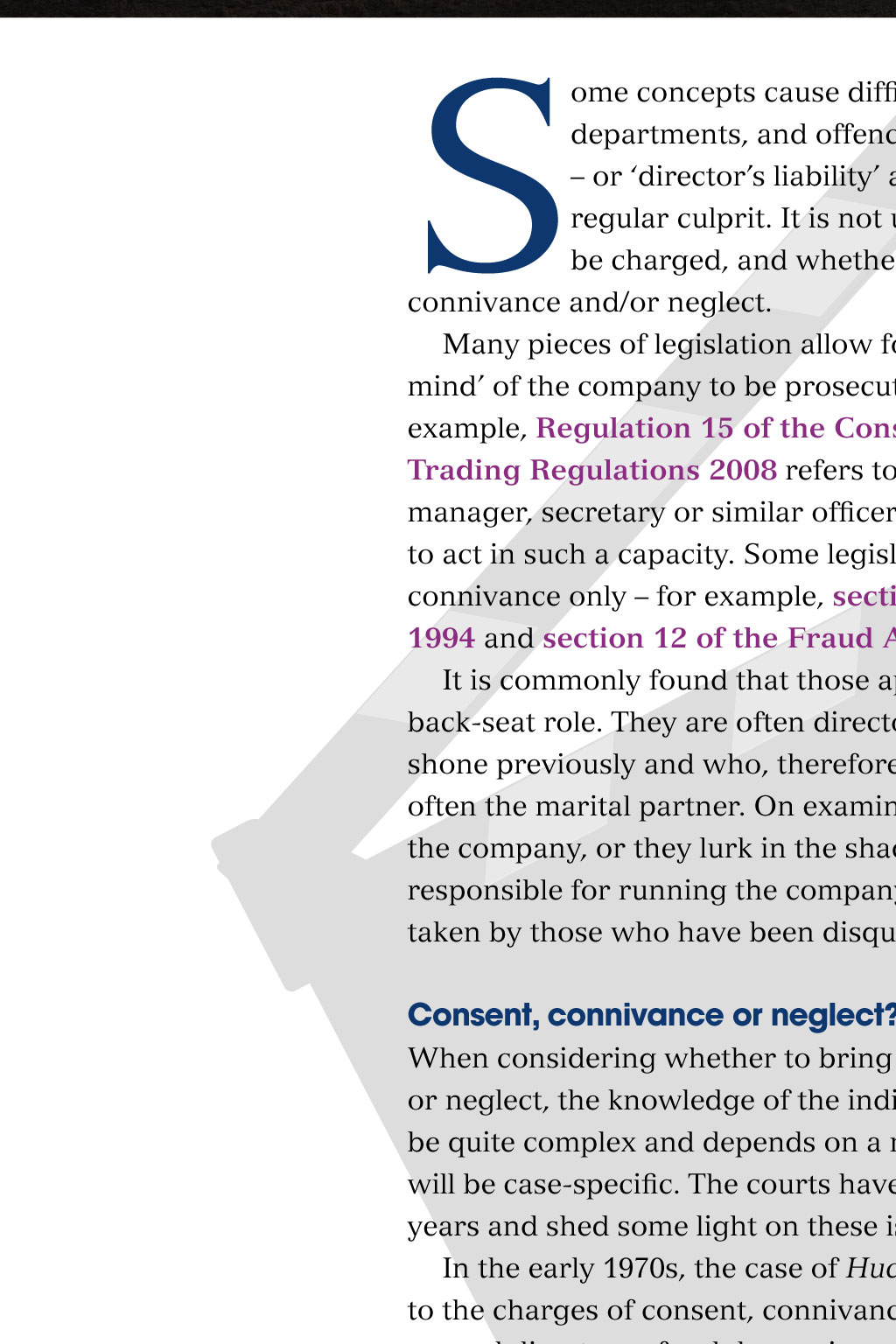
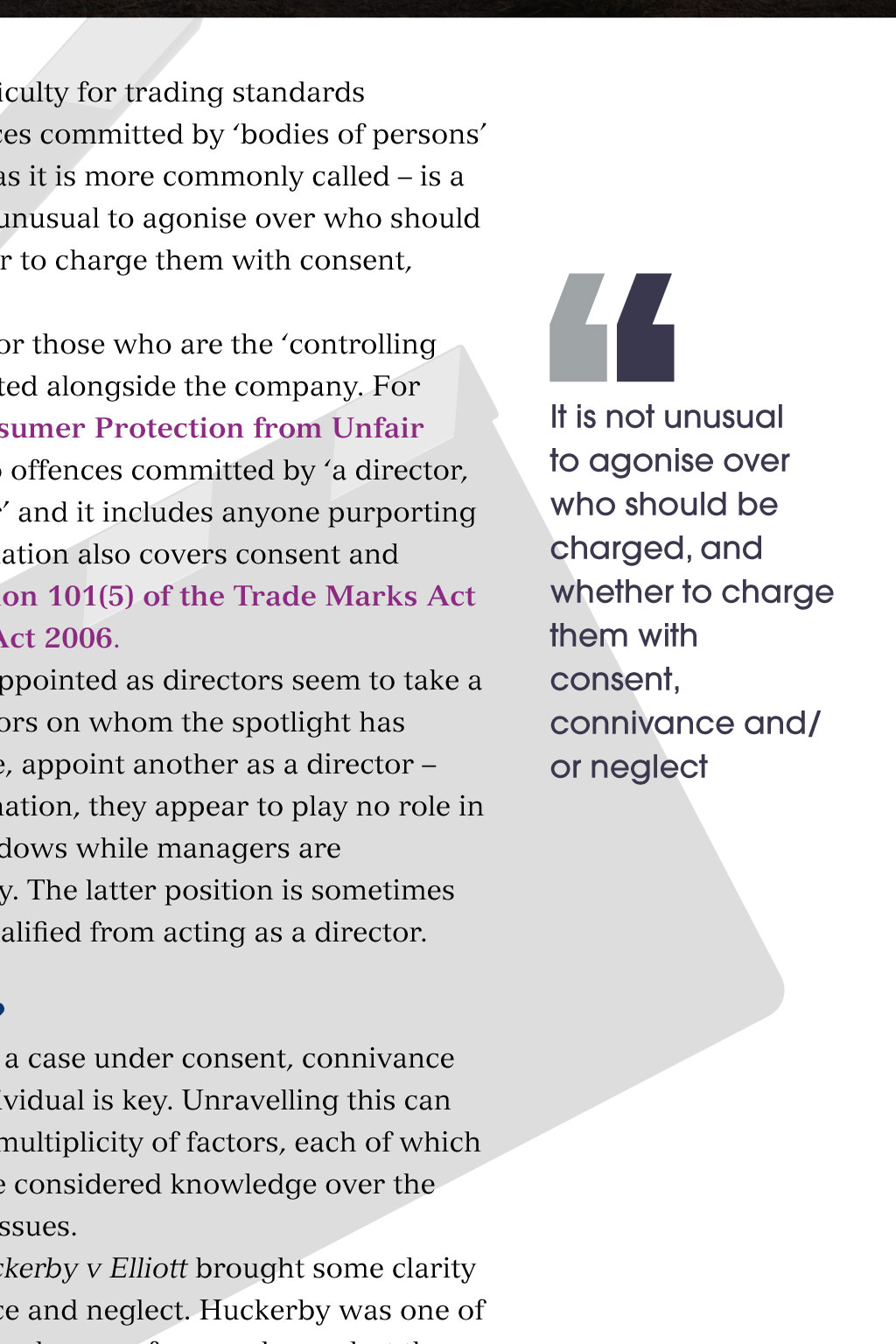
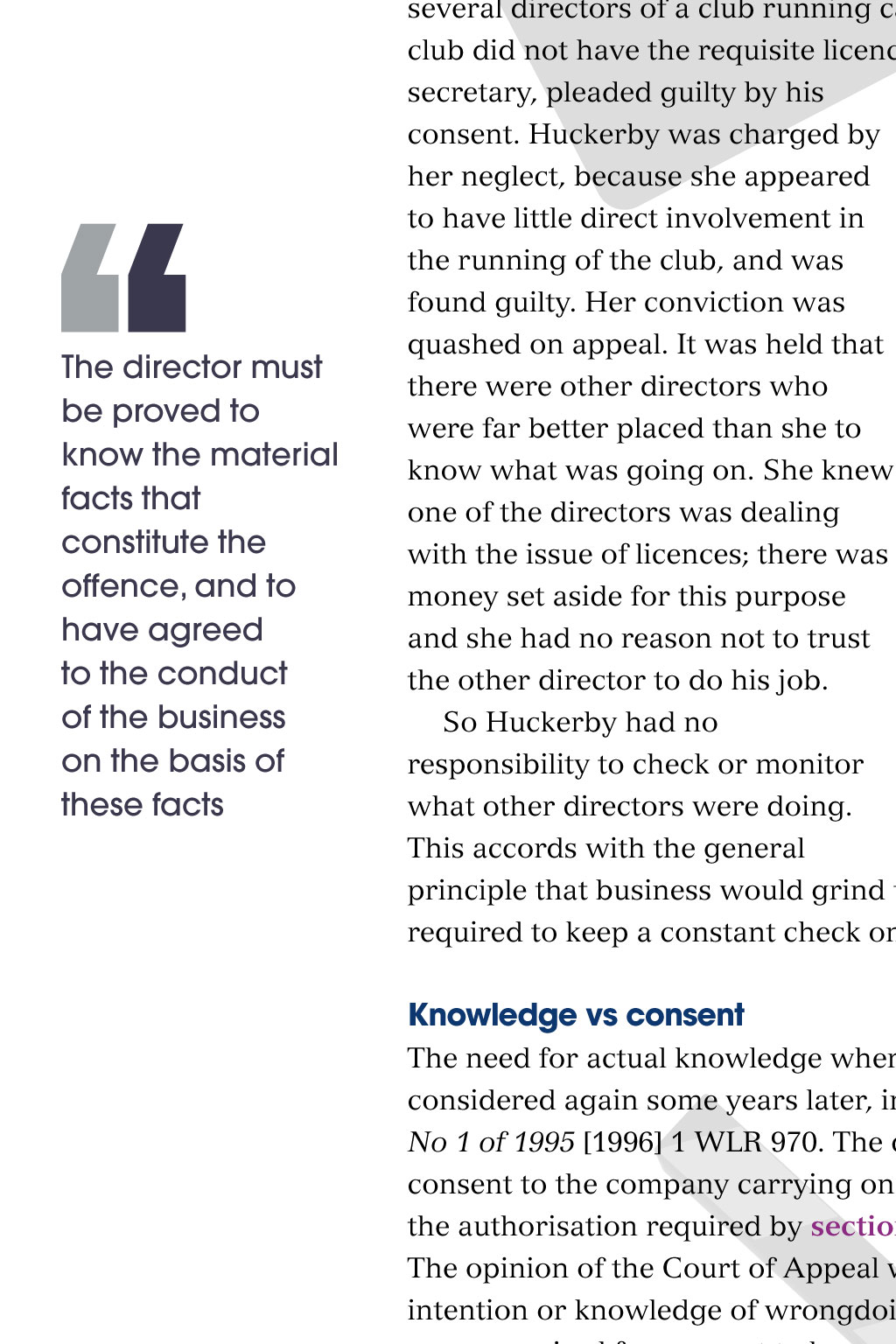
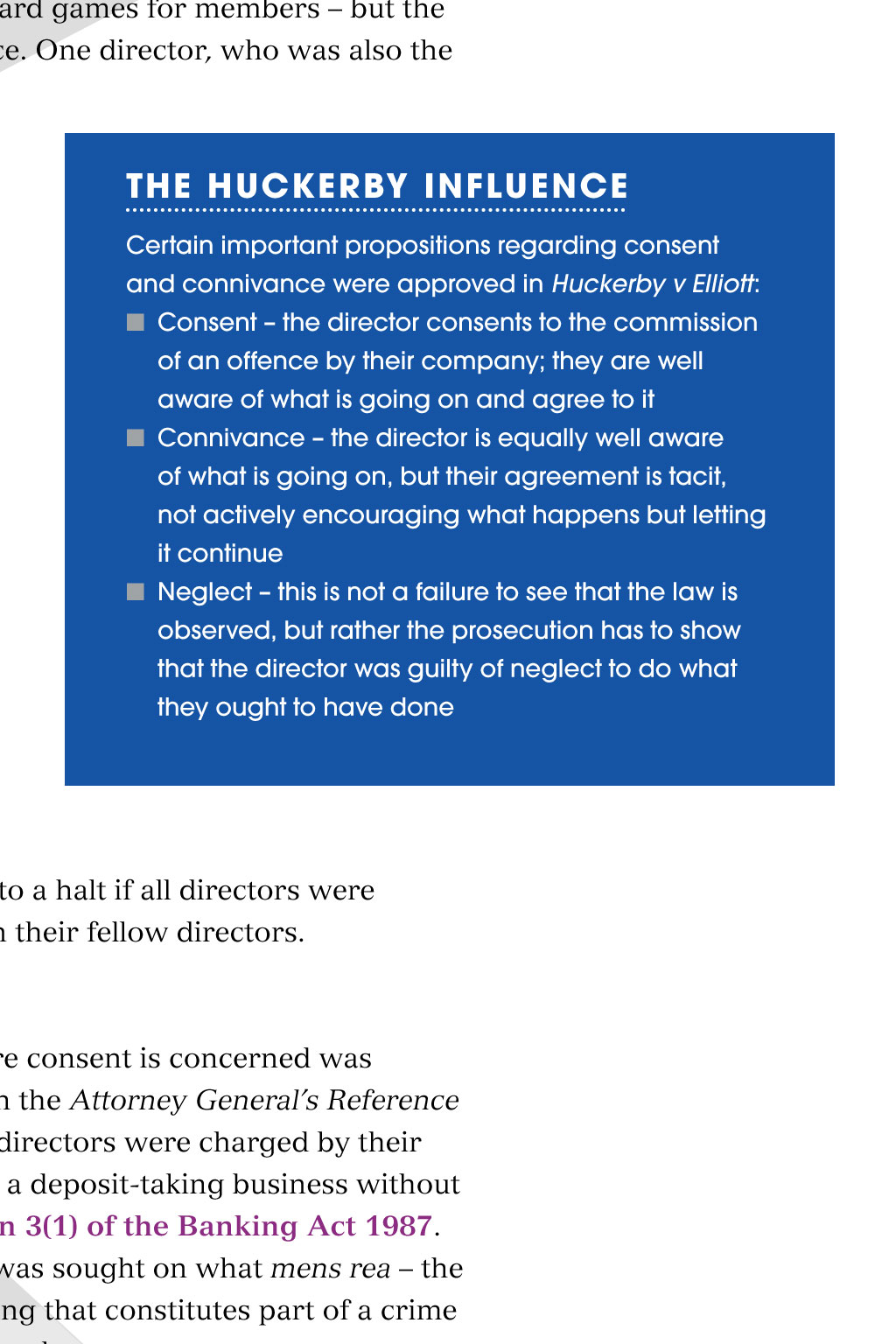
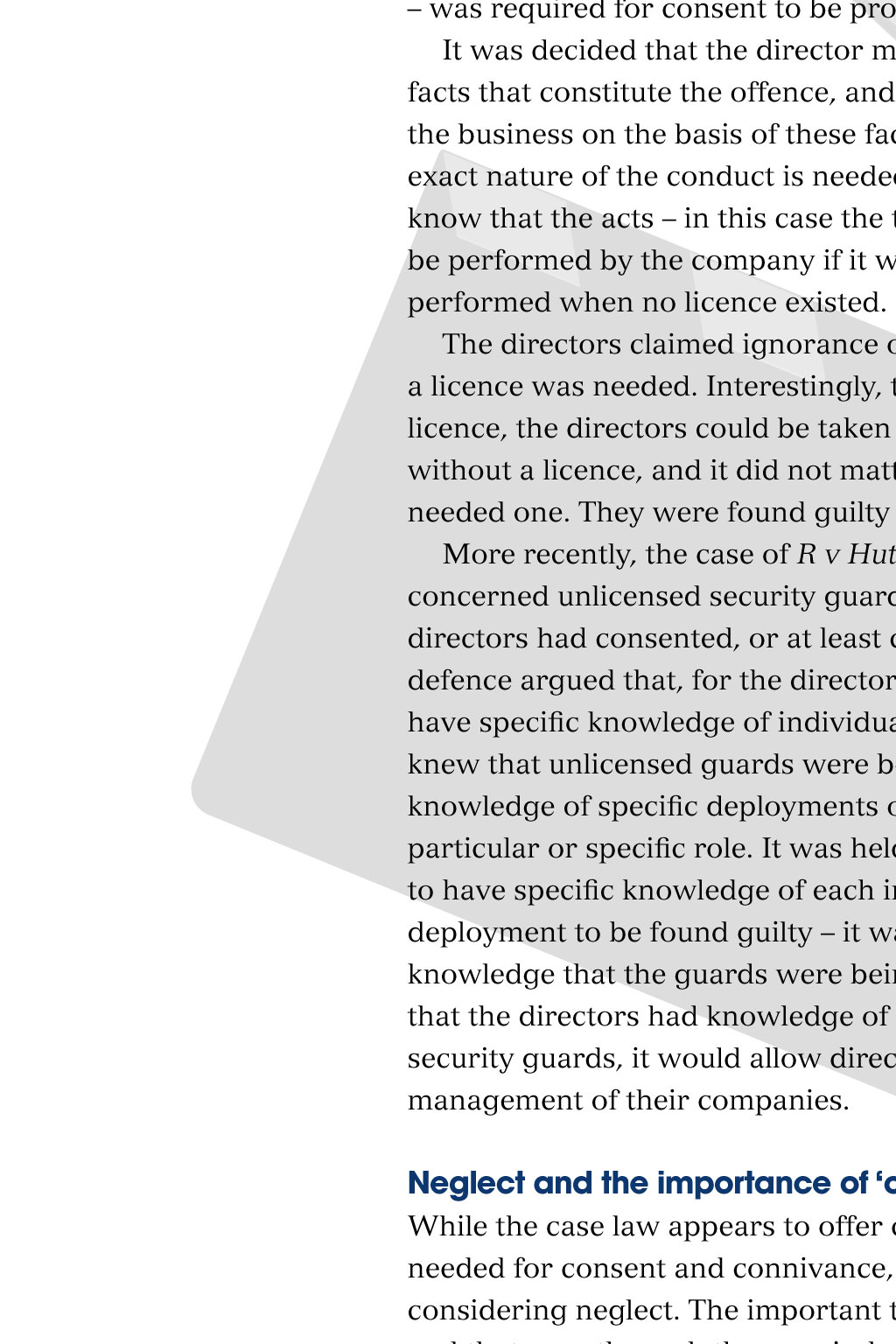
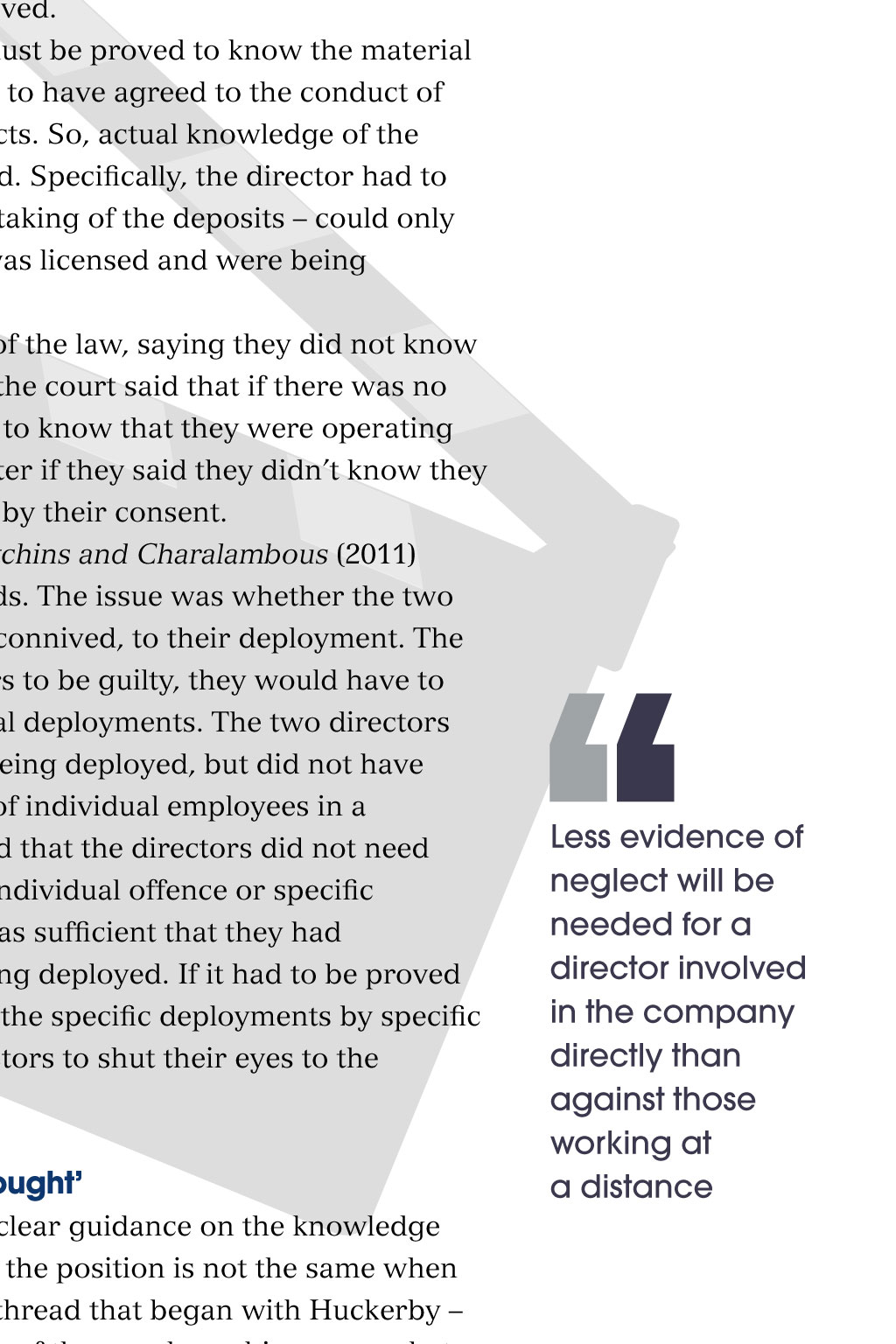
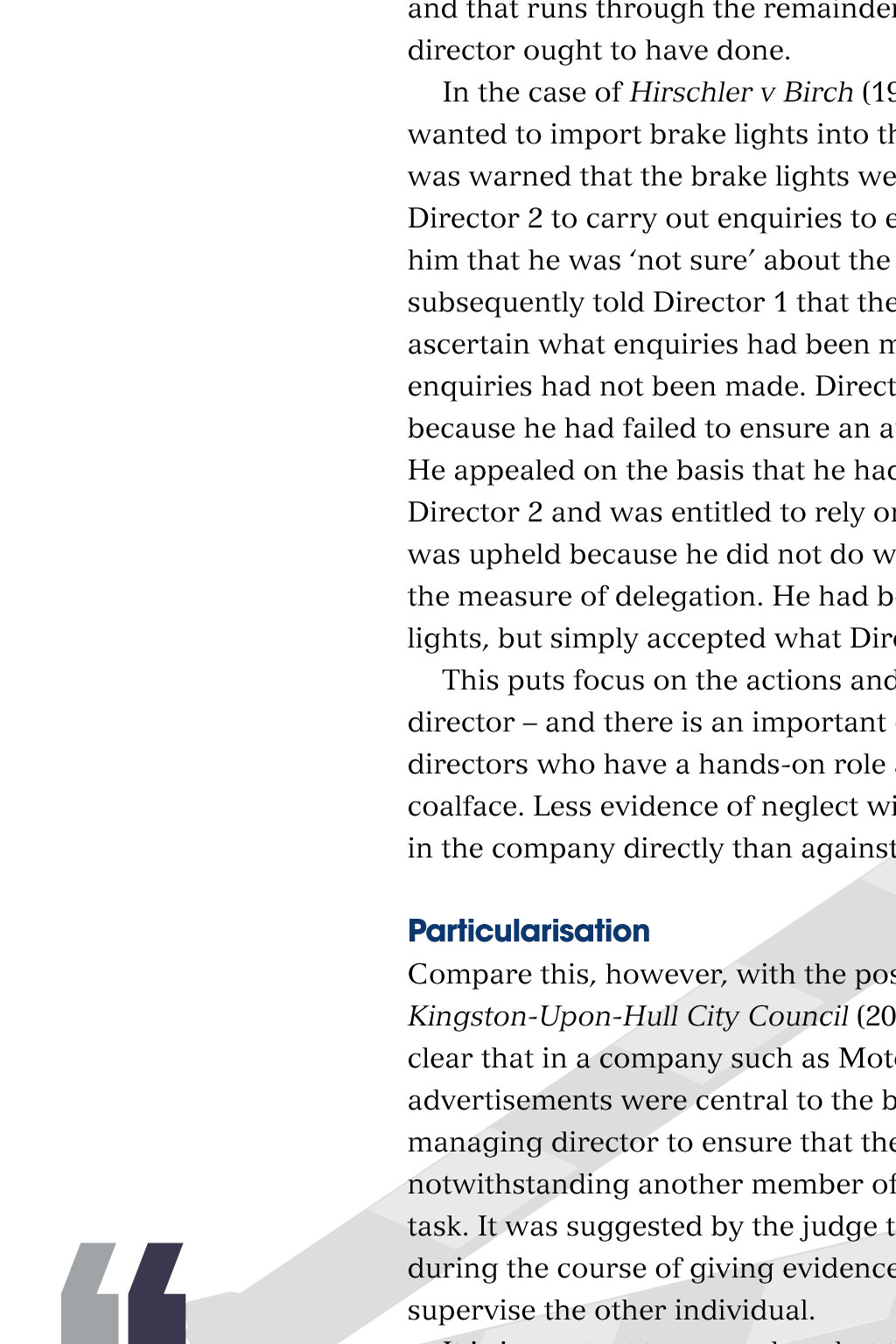
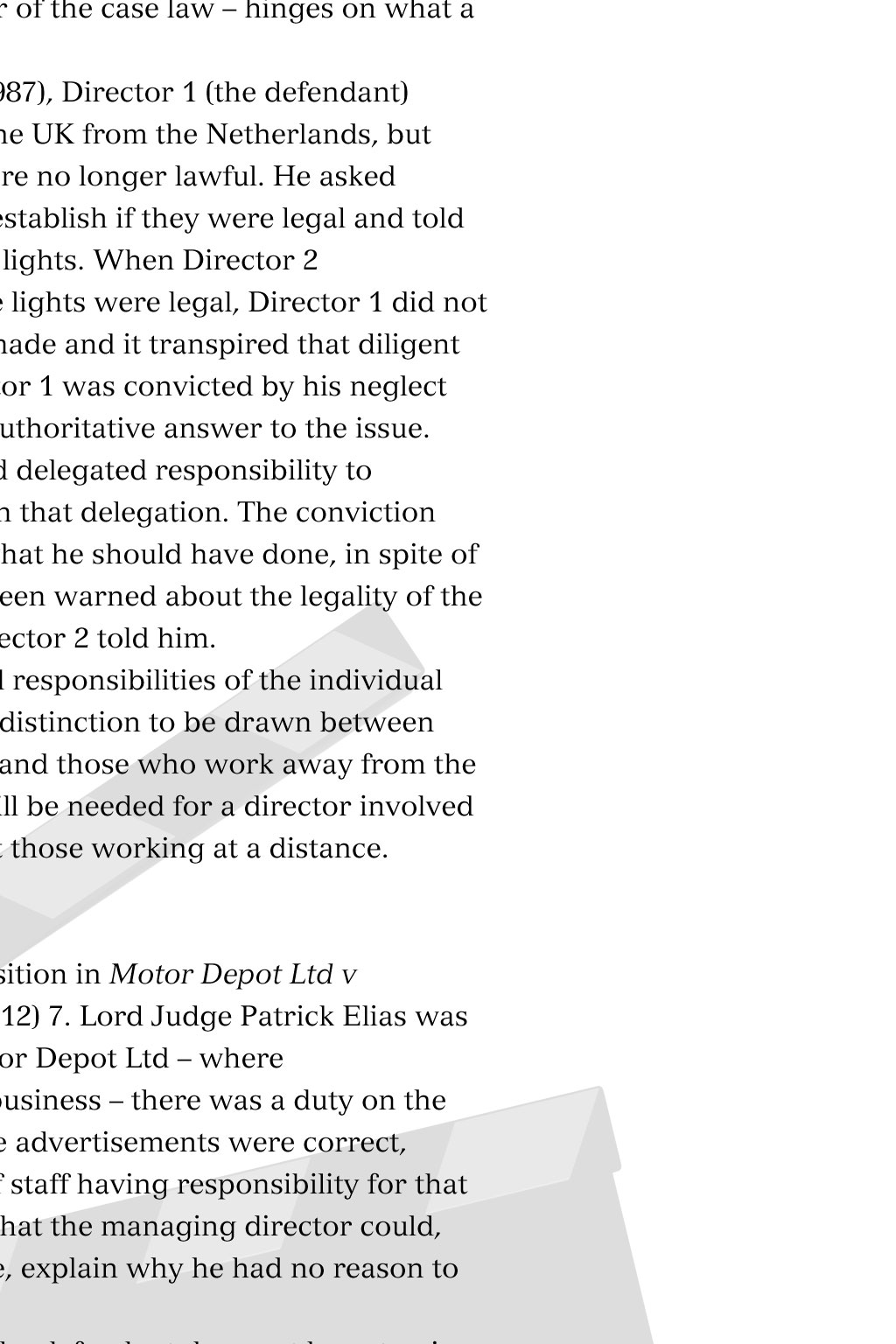
















Legal perspective on statutory time limits in trading standards prosecutions In this feature | definitions | discovery of the offence | sufficient evidence Time on your side? It is important to know how to prevent your prosecutions from becoming time-barred. Jonathan Kirk QC and Michael Coley offer some pointers T ime limits for bringing prosecutions in trading standards cases cause more difficulty than they really should. Primarily, this is because of confusion about when the statutory time limits in regulatory offences start to run. Thisuncertainty can lead to evidentially strong cases beingbarred from prosecution, sometimes by a matter of days. When does time start to run? This is perhaps the most important question. For most regulatory offences, the event that starts time running will be specified in the provision creating the offence. Typically, that will be either the discoveryof the offence by the prosecutor, or the point at which theprosecutor has sufficient evidence to support a belief that proceedings are justified. This distinction is important in analysing thetrigger for a time limit and the identification of the legal person whois to be considered the prosecutor. Discovery of the offence time limits Trading standards departments should document clearly the date on which a complaint is first received and its basic content. Critically, they should also ascertain from the outset which type of time limit applies In many instances such as the Consumer Protection from Unfair Trading Regulations 2008 time will start to run from the discovery ofthe offence by the prosecutor. Provisions of this type are common tomany trading standards offences, including those under the Trade Descriptions Act 1968 (TDA). Brooks v Club Continental Ltd [1981] TrL126 concerned a false trade description in a holiday brochure that ahotel in the south of France had a swimming pool. The High Court held that the offence had been discovered when the defendant had been correctly identified and the trading standards officer had first been informed that the defendant had published a brochure particular that was false. Discovery occurred when all the facts material to found the relevant charge under the Act were disclosed to the appropriate officer. The definition of discovery by the prosecutor was considered further in Tesco Stores Ltd v Harrow LBC [2003] EWHC 2919 (Admin), where the allegation concerned bread rolls bought from a supermarket that had a wire embedded in them. The complainant telephoned Harrow andspoke to an administrative assistant, who left a note of the call for the investigating environmental health officer (EHO). Later that same day, the EHO called the complainant and was able to speak to his wife. The EHO confirmed in that call that her husband had bought a bread roll from Tesco with a wire in it. It was argued by the prosecutor that the offence was not discovered on the day of the complaint, but only later when the EHO took possession of the bread rolls or even later, when an analysts report was provided. The High Court rejected that argument, on the basis that discovery did not require any investigation or confirmation of the facts. Discovery occurred when the facts disclosed, objectively considered, would have led the prosecuting authority to have reasonable grounds tobelieve that the offence might have been committed by some person who had been identified to it. In that case, discovery was on the day the complaint was first made, such that the offences were out of time. In Regina (Donnachie) v Cardiff Magistrates Court [2007] EWHC 1846 (Admin) the defendants were alleged to have applied false trade descriptions by clocking taxis that is, reducing the vehicles odometer readings in the Cardiff area. The case required consideration of who the prosecutor was for the purposes of the discovery-of-the-offence time limit provision in the TDA. It was argued that the prosecution was in time because the prosecutor was the person authorised to lay the information, and it was his discovery of the offence that mattered. The High Court robustly rejected that argument, to find that the prosecutor was the local authority acting through its relevant officials. Discovery occurred when its officials had knowledge sufficient to found a reasonable belief that an offence had been committed. It is important to understand that the test for discovery-of-the-offence provisions is objective. Discovery will not depend on the state of knowledge of the person making the prosecution decision, but on what relevant officials are told, usually when the complaint is first made. The cases make it clear that an investigating officer is very likely to be considered such an official. The authorities do not make it clear whether ancillary departmental employees with administrative roles such as a receptionist are also relevant officials. However, it would be prudent for prosecutors, when forecasting a time limit, to work on the basis that time limits run from when the basic facts of the offence including the defendants identity are first communicated to the local authority. It should also be emphasised that discovery in time-limit provisions ofthis type means mere discovery of the facts constituting a potential offence. It connotes no investigation, confirmation of those facts, or assessment of whether they amount to an offence. What this means is that, once an authority has discovered an offence, it has until the limitation period expires to investigate, obtain evidence, decide on an enforcement strategy for example, offering advice, accepting undertakings to the enforcer, applying for a civil enforcement order, orprosecuting apply the full code test, and lay the information. Evidential sufficiency time limits For certain regulatory offences such as the Animal Welfare Act 2006 time starts to run on the date when evidence sufficient to justify the proceedings comes to the prosecutors knowledge. Evidential sufficiency time limits are different from discovery-of-the-offence provisions because, necessarily, they require an assessment of the subjective opinion of the individual who had responsibility for making theprosecution decision. It follows that the point at which the evidentialsufficiency test is met is likely to be some time after an offenceis discovered. In Letherbarrow v Warwickshire CC [2014] EWHC 4820 (Admin), afarmer was investigated for not taking reasonable care of cattle and pigs. The High Court found that the prosecutor, for an evidential sufficiency provision, was the individual with responsibility for deciding whether the prosecution should go forward. See also the recent case of R v Woodward [2017] EWHC 1008 (Admin), in which Food Standards Agency investigators were not considered to be a part of the Crown Prosecution Service prosecution. In RSPCA v Johnson [2009] EWHC 2702 (Admin), a dentist was prosecuted for causing unnecessary suffering to a thoroughbred racingstallion called Hans Christian. The High Court accepted that ascertaining evidential sufficiency would inevitably involve a degree ofjudgment in the mind of the person making the prosecution decision. However, prosecution authorities should also be mindful that they are not entitled, by passing papers from hand to hand and failing to address the issue, to delay the running of time. Time-limit certificates Most time-limit provisions give the prosecution the power to issue a certificate stating when the offence was discovered or sufficient evidence was found. The certificate may be given at any stage of the proceedings (Letherbarrow) and may be reissued if originally defective (Woodward). The statutory purpose of a certificate is to offer conclusive evidence that the relevant time limit has been complied with. However, in R v Lamont Perkins [2012] EWHC 1002 (Admin), it was made clear that a certificate could be challenged by a defendant if it was plainly wrong or fraudulent. The court emphasised that a prosecutor should take great care when certifying a date under such a statutory provision. Primary authority cases In cases involving Primary Authority, the effect of section 28 (section 25C(8) from 1/10/17) of the Regulatory Enforcement and Sanctions Act 2008 and schedule 4 (review) should be considered. Where the enforcing authority has been prevented from bringing proceedings by Primary Authority intervention, the time limit will stop running while the prohibition is in place. Confusion can lead to evidentially strong cases being barred from prosecution, sometimes by a matter of days Conclusion The primary point to emerge from the above cases is that there is often confusion between discovery of the offence and evidential sufficiency time-limit provisions. Trading standards departments should document clearly the date on which a complaint is first received and its basic content. Critically, they should also ascertain from the outset which type of time limit applies. Credits Jonathan Kirk QC and barrister Michael Coley, both of Gough Square Chambers. Images: iStock/Unya-MT To share this page, in the toolbar click on You might also like Piercing the corporate veil August 2017